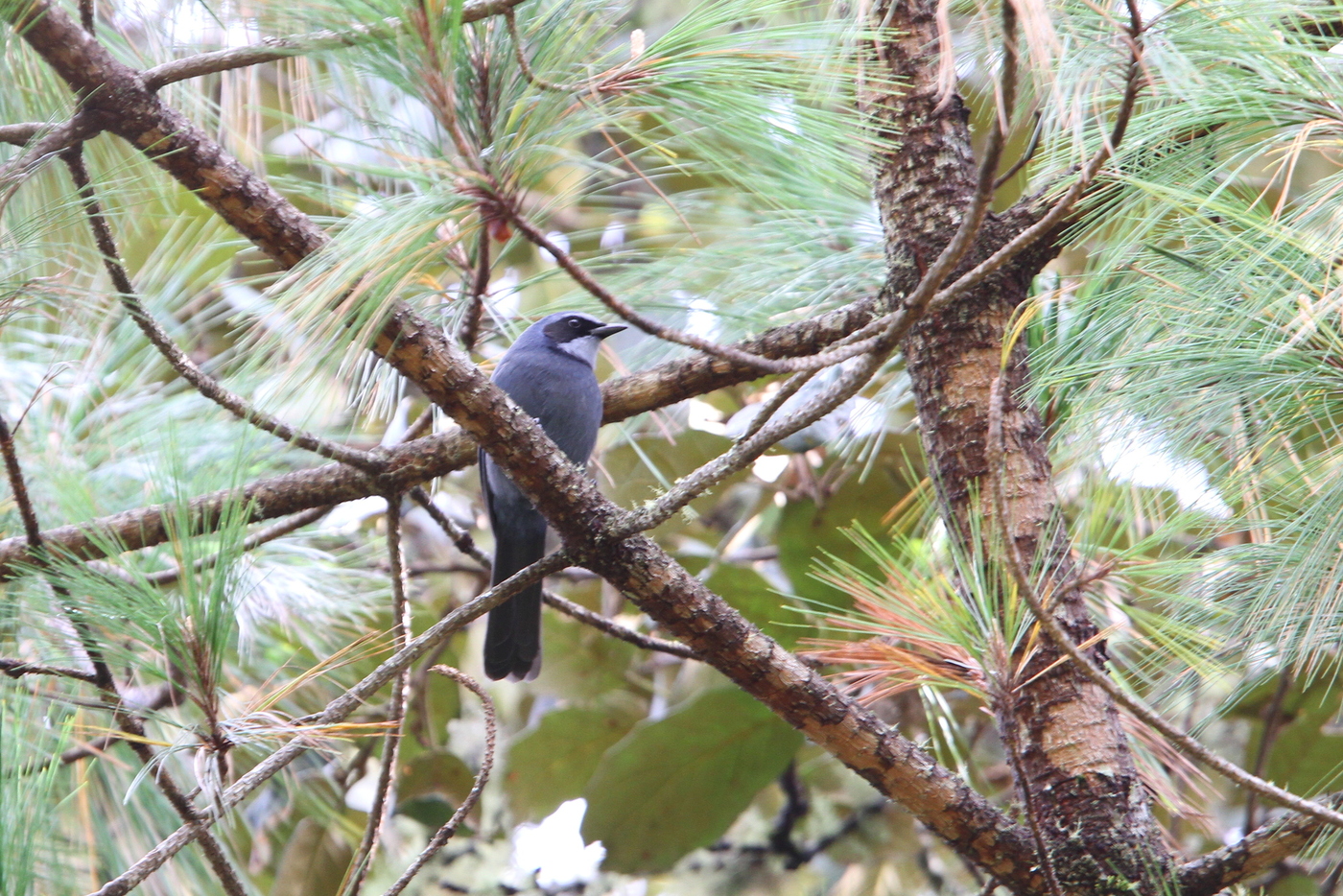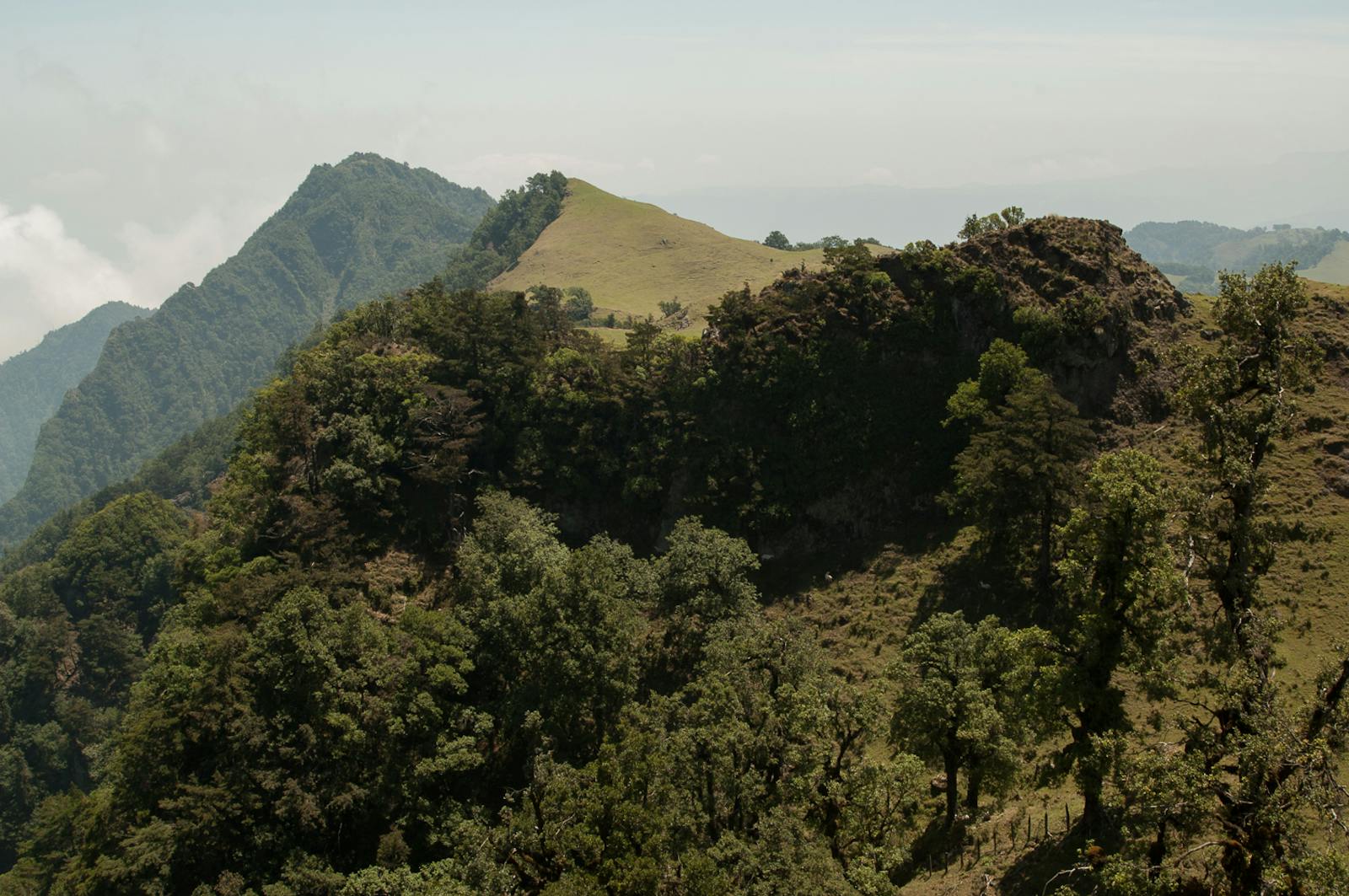Oaxacan Montane Forests
The ecoregion’s land area is provided in units of 1,000 hectares. The protection goal is the Global Safety Net (GSN1) area for the given ecoregion. The protection level indicates the percentage of the GSN goal that is currently protected on a scale of 0-10.
Bioregion: Mexican Dry & Coniferous Forests (NT28)
Realm: Central America
Ecoregion Size (1000 ha):
762
Ecoregion ID:
487
Conservation Target:
93%
Protection Level:
0
States: Mexico
The critically endangered blue-eyed aquatic treefrog is endemic to the state of Oaxaca in Mexico. They are found within this ecoregion particularly within pristine forest nearby small streams and creeks where they prefer riparian habitat. It might seem impossible to be an aquatic treefrog, but this name describes them like night and day: at night they lay submerged in the water avoiding detection, and by day their climb up into rocks, leaves, and branches surrounding the creeks to look for bugs. As their name also suggested, their unique blue eyes make them easily recognizable, but the increasing threats of invasive species and habitat destruction made them incredibly rare and difficult to find.

The flagship species of the Oaxacan Montane Forests ecoregion is the dwarf jay. Image credit: Courtesy of Christoph Moning, iNaturalist
The Oaxacan Montane Forests ecoregion is located in the states of Oaxaca and Puebla. The forests are composed mostly of tall trees (20–40 m) that grow at altitudes between 1,400–2,250 m. The climate is temperate-humid with around 3,000 mm/year of precipitation. At altitudes between 1,600–1,800 m, forests dominated by the walnut family represent some of the wettest zones of Mexico (5,000–6,000 mm/year).
Dominant plant species are guayabo amarillo, Mexican elm, sweet Gum, Mexican hand tree, sour gum, oak, and Mexican white pine among others. Palm trees, ferns, epiphytes, fungi, and herbaceous compose the lower strata. These forests commonly support a diverse community of orchids and spiny plants.
The diversity of ferns and mosses in these forests is important and nearly 630 species can be found. The speciation process of plants has created a diverse fauna that persists as a consequence of the complexity of animal-plant interactions, especially in birds, bats, and bees. At least 500 species of plants have been registered as inhabitants of these forests in the northern sierra of Oaxaca, and the most diverse families include daisies, Orchids, Peppers, and Coffee.
Among the largest intact montane forests of southern Mexico, this ecoregion houses the highest diversity of amphibians and reptiles in the country. An endemic and endangered magnolia occurs here as well. Other species include the Mexican plated lizard, paintbelly spiny lizard, two species of anoles iguanian lizards, and the Mexican whiptail lizard. The forests constitute a mixture of bird species from both the Pacific slope and Caribbean slope of Mexico.
Avifauna includes amethyst-throated hummingbird, stripe-tailed hummingbird, azure-hooded jay, long-tailed wood-partridge, and the dwarf jay. These forests are also a center for diversification of insects, including a large number of endemic species. The cloud forests of Oaxaca are an important center of diversification for butterflies.
Montane forests in Oaxaca have suffered various degrees of perturbation, but they are still recognized as one of the largest intact remnants of montane forest in all of Mexico. The main activities that contribute to habitat destruction are agriculture, cattle farming, logging, and exploitation of forest resources. Erosion in areas of deforestation is intense and contributes to soil loss, which prevents future regeneration of the forest.
Large fields of white and red ayacote beans are grown in areas occupied by montane forests; corn is particularly damaging for cloud forests areas as it causes severe soil loss and it is productive for only two years. Destruction of the montane forest also causes poor infiltration of water and low rates of horizontal rain capture, and this alters the complex relationships among plants and animals that depend on cloud forests. Fragmentation of the forest restricts the movement of many organisms that depend on montane forests and the adjacent vegetation.
There are very few protected areas in this ecoregion. The priority conservation actions in the next decade are to: 1) create protected areas that covers important intact forests habitats; 2) develop strategies and practices for the sustainable management of natural resources in this ecoregion; and 3) include local and native communities in the management of forest and agricultural resources.
Citations
1. Valero, A., J.Schipper, T. Allnutt. 2018. Oaxacan montane forests. https://www.worldwildlife.org/ecoregions/nt0146. 8 August 2018.
2. Flores-Villela, O. 1993. Herpetofauna de México: distribución y endemismo. Pages 251-279 in T. P. Ramamoorthy, R. Bye, A. Lot, and J. Fa, (editors), Diversidad Biológica de México. Orígenes y Distribución. Mexico: Instituto de Biología, UNAM.
3. Robles Gil, P., G. Ceballos, and F. Eccardi. 1993. Mexican diversity of fauna. México:Cemex & Sierra Madre.
4. Georgina Santos-Barrera, Luis Canseco-Márquez, Oscar Flores-Villela 2010. Plectrohyla cyanomma. The IUCN Red List of Threatened Species 2010: e.T55459A11315211. Accessed June 27, 2019.



